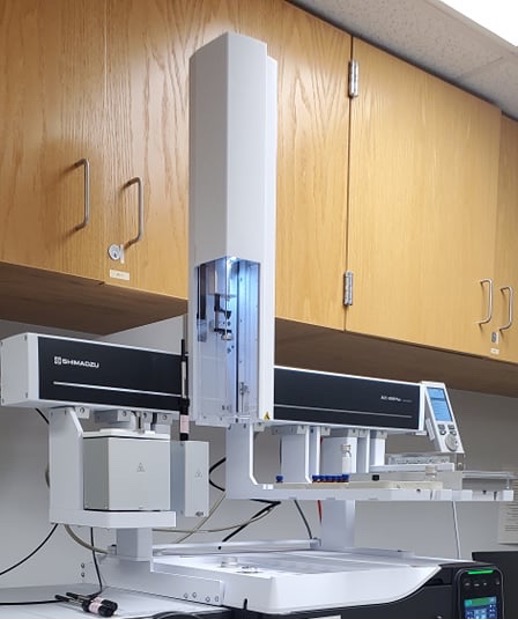
It enables continuous sample injection using different syringes. So different analytical methods can be performed continuously without changing the column.
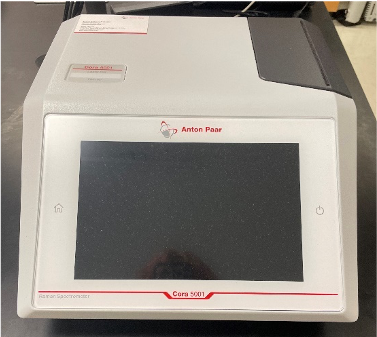
A Raman machine analyzes the chemical makeup of a substance by shining a laser on it and examining the light that scatters back, which acts as a unique "fingerprint" for identification. It is a non-destructive technique used to identify unknown materials, verify known substances, and perform quality control in industries like pharmaceuticals, forensics, and manufacturing.
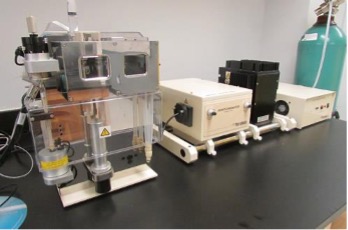
This is used for steady-state and kinetic experiments by rapid mixing samples and monitoring changes using visible or fluorescence spectroscopic techniques. Its applications include the kinetic studies of enzyme catalysis, protein folding, and coordination chemistry.
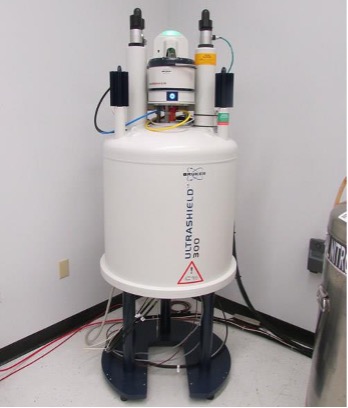
This uses an indispensable technique for solution structural determinations of simple organic molecules to much larger biological molecules. It is controlled by user friendly software that allows automatic tuning and shimming while optimizing experimental conditions of the pulse sequence. This technique is essential for undergraduate chemistry students.
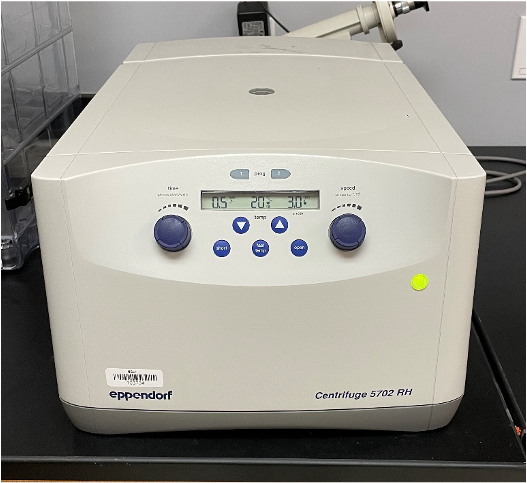
The Centrifuge 5702 family of low-speed centrifuges, including the heated centrifuge Eppendorf Centrifuge 5702 RH, was especially designed to meet the requirements of low- to mid-throughput clinical research and cell culture labs. These low-speed centrifugation devices are compact in design, fitting comfortably on every lab bench. They operate quietly, benefiting your work environment, and provide six different centrifuge rotor options to accommodate any type of tube.
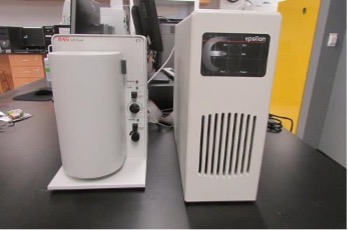
This is generally used to study the electrochemical properties of transition metal complexes or biosensors by cyclic voltammetry, potential electrolysis and amperometry.
Current model: EC Epsilon Potentiostat/Galvanostat
Latest model available:
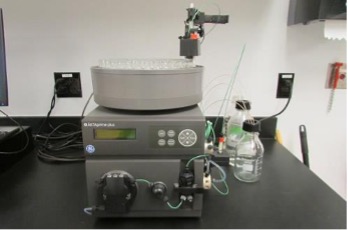
This is used to detect or purify biological materials, such as proteins in a mixture, by recording absorbance at 260 or 280 nm. The purified components of the mixture are collected in separate test tubes using a fraction collector. Many different types of chromatography, such as ion-exchange and affinity, can be performed using this system.
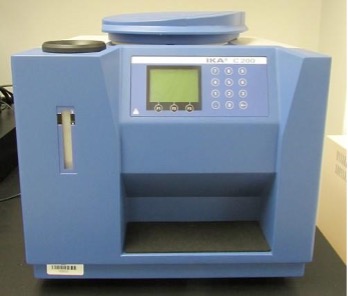
This is used to measure the heat generated by the combustion of a sample in the presence of oxygen in a closed decomposition vessel surrounded by water under controlled conditions. Examples of combustible materials that are studied by this thermodynamic technique are food, fuels, and explosives.
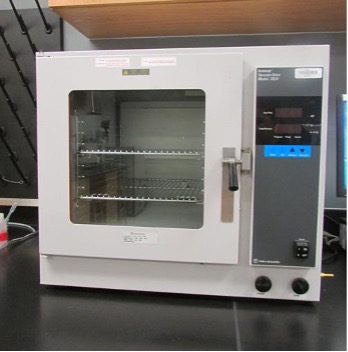
This is a very high-temperature furnace suitable for carrying out processes such as brazing, sintering, and heat treatment with consistency by working under vacuum or inert atmosphere eliminating reactive gases such as oxygen.
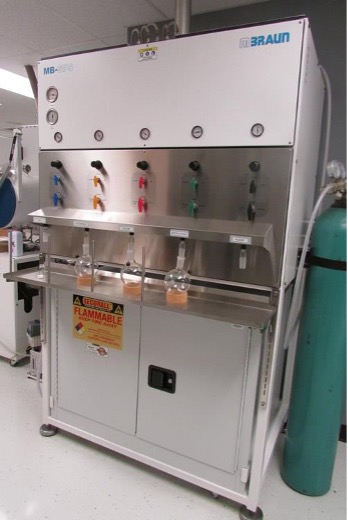
This is a solvent purification system, which is connected to an inert glovebox. It removes water and other impurities from the solvents under a nitrogen gas stream. It is commonly used for air- and water-sensitive reactions that need anhydrous (dry) and pure solvents.
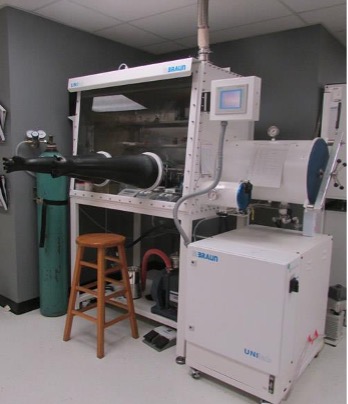
This is used to run air- and water-sensitive reactions in a closed environment purged continuously with an inert gas, such as nitrogen, to obtain atmospheric purity levels of less than 1 ppm of water and oxygen. Chemicals can be transported in and out of the glovebox using a side arm vacuumed and purged by nitrogen and it is equipped with a freezer for storing temperature sensitive chemicals.
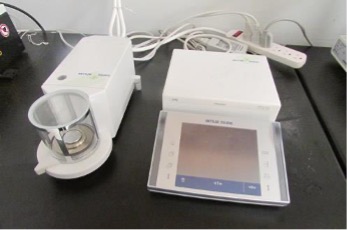
This is a very sensitive balance with an excellent typical repeatability of 0.7 micrograms. The balance can reduce cost for precious substances because solutions with minimal chemicals can be prepared without needing dilution.
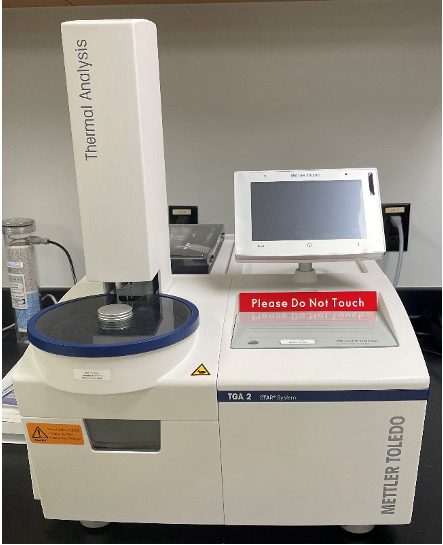
This is used to measure weight changes of materials placed in a precision microbalance due to chemical decomposition and/or oxidation as a function of temperature or time. The technique is frequently used in quality assurance by the thermal stability characterization of materials used and produced in industry including pharmaceutical and petrochemical. In some specific applications, the instrument can quantify the weight loss due to volatile matter (water/solvent), plasticizer, filler and pyrolysis.
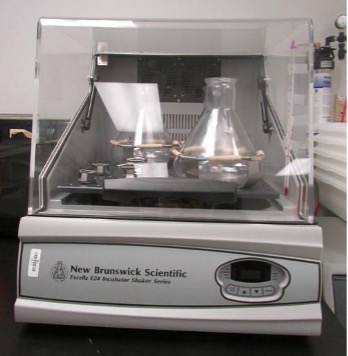
This is a temperature-controlled shaker for growing bacteria in large size flasks. The shaker platform moves in a circular motion to provide mixing and gas exchange in the culture.
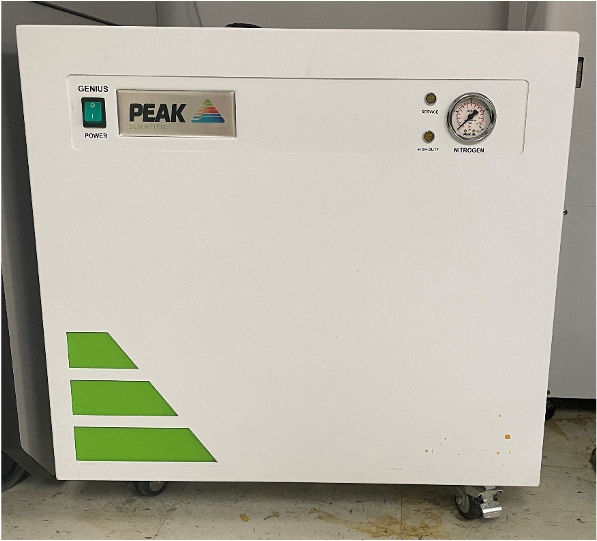
This instrument provides high purity nitrogen gas in-house as needed for the LCMS uses as the drying and carrier gas. This allows the LCMS to run samples overnight or over weekends without the worry of running out of gas.
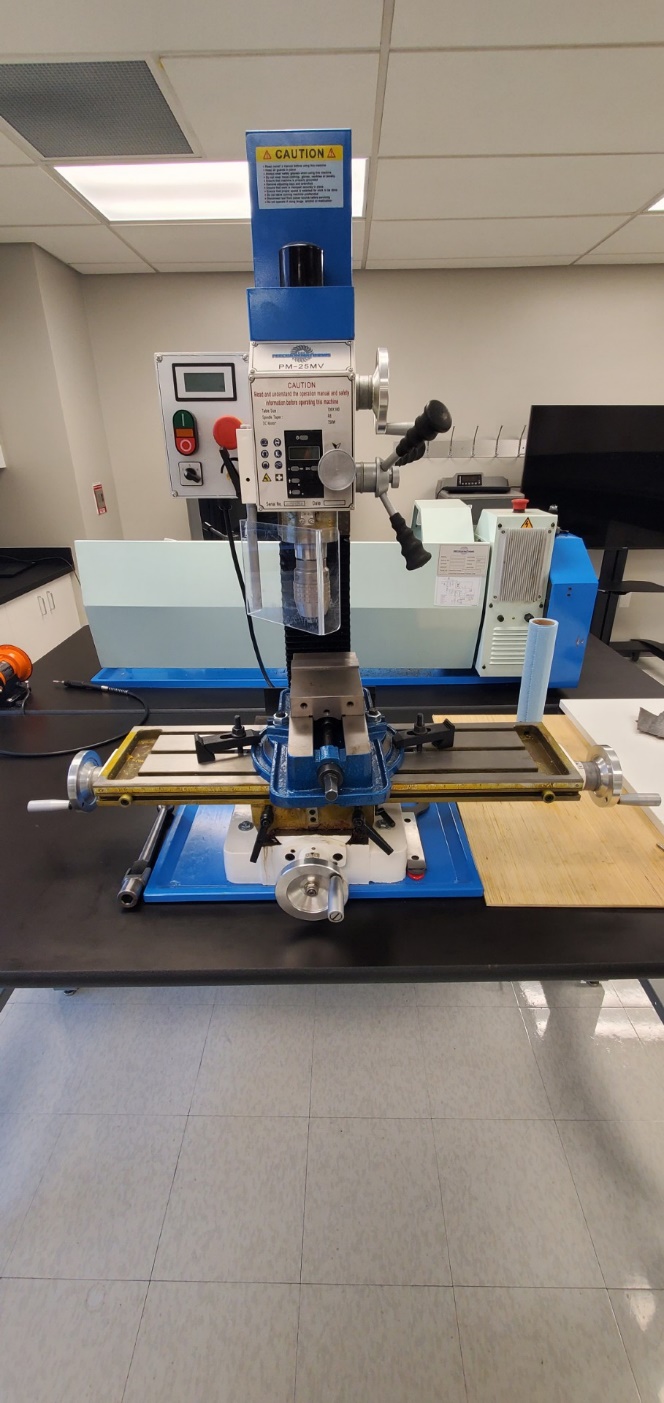
A PM-25MV is a versatile, variable speed milling machine used for shaping metal and other materials like wood by precisely removing material with a rotating cutter. It is used to create custom metal parts, brackets, and hardware, or to deburr and finish flat parts after they've been rough-cut. As a benchtop mill, it's popular with hobbyists and small workshops due to its compact size, cost-effectiveness, and capability for precise machining, including drilling and heavy-duty cutting operations.
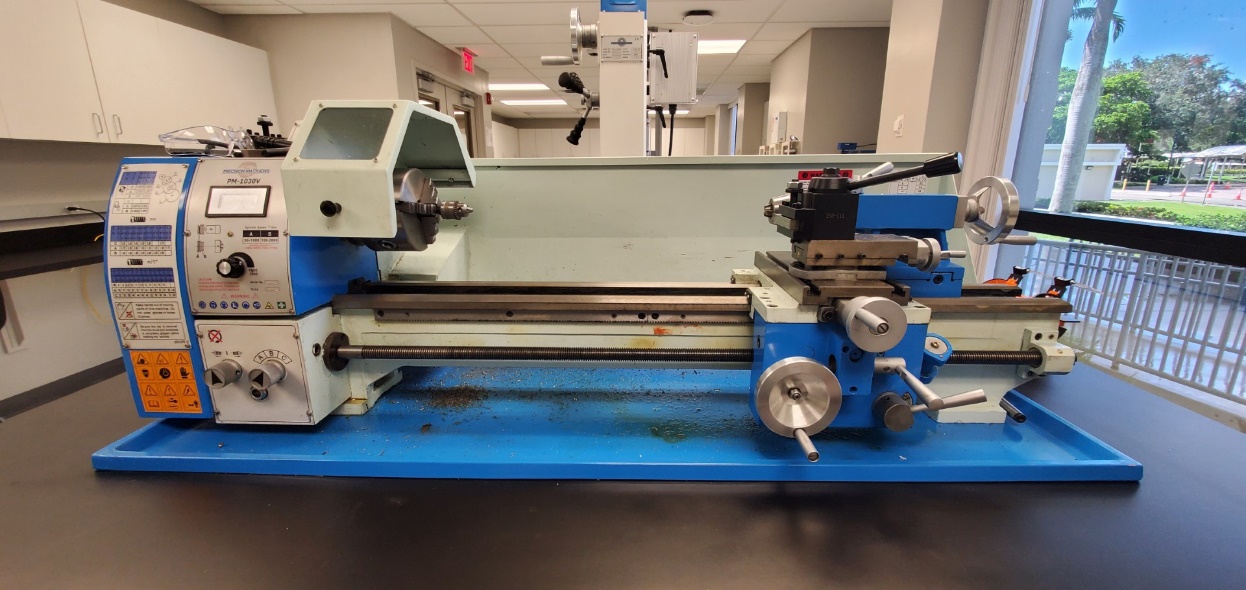
A quiet machine that turns, bores, knurl, and more for wood and metal. Has quick change options for tool post.
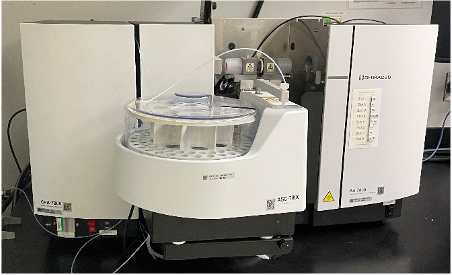
This instrumentation is utilized for the quantitative determination of trace chemical elements, especially metals. It is commonly used for environmental sampling (e.g., in water-quality analysis measuring mercury and lead concentrations).This system holds up to 8 lamps, that allows for multiple elements to be analyzed in one run. This instrumentation is equipped with a graphite furnace, allowing more sensitivity (ppb) and an autosampler that holds up to 60 samples.
The instrument is also equipped with a hydride vapor generator (HVG) to analyze high sensitivity elements such as arsenic, selenium, and mercury.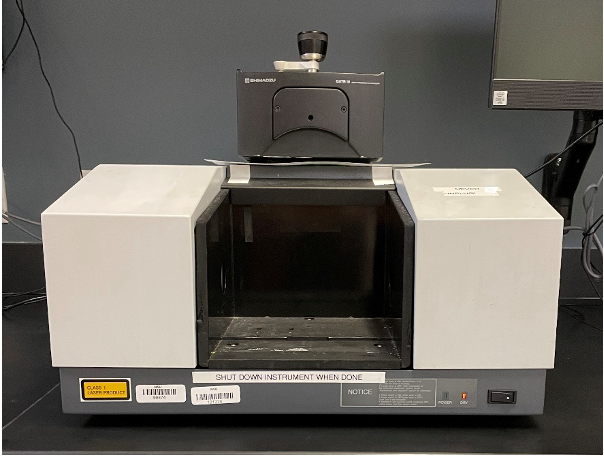
This instrumentation is used to analyze and identify chemical compounds by measuring how much light it absorbs as set wavelengths. Has the spectral range of 8000 to 350 cm-1 optimized, mid-infrared KBr beamsplitter. It can be used to verify material composition, detect contaminants, or compare unknown substances to reference spectra. Equipped with ATR for higher resolution and less sample required.
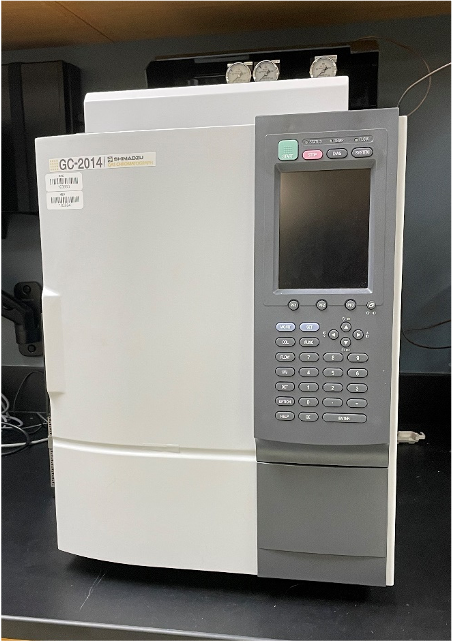
User-friendly with high cost-performance, the GC-2014 gas chromatograph is an excellent option for routine analysis. It offers great flexibility with support for both packed columns and capillary columns, and includes a self-diagnostics function to prevent downtime and maximize lab efficiency.
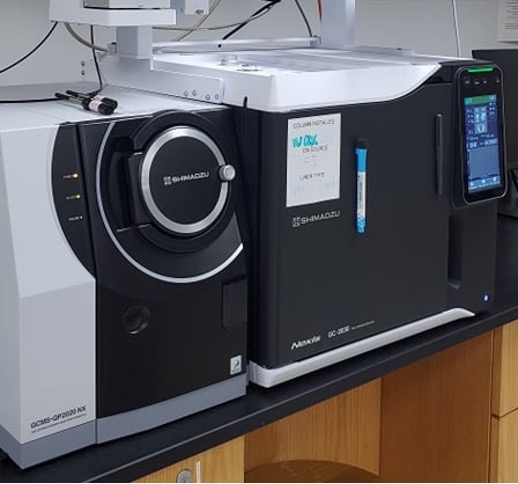
Gas chromatograph-mass spectrometer is used to identify different gases or volatile substances within a mixture. GC-MS is commonly used in forensic investigations, drug discovery, metabolomics, and environmental chemistry.
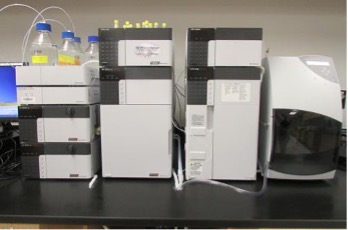
This is used to separate and quantify organic compounds in a mixture. It is equipped with an auto-sampler for running multiple samples, a photodiode array and a low temperature evaporative light scattering detector for identifying a wide range of compounds. It is commonly used in the pharmaceutical industry for quality control of drugs by detecting their trace impurities.
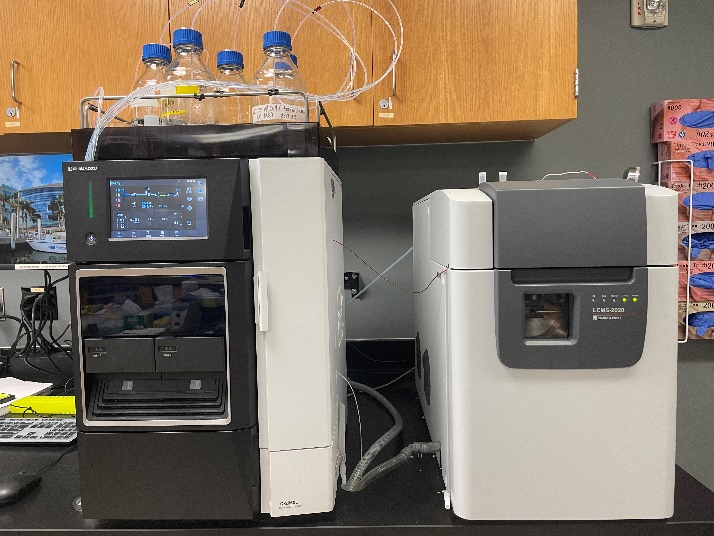
This instrumentation is used to analyze, identify, and quantify compounds based on their mass-to-charge ratio. Commonly used in fields like pharmaceuticals and food safety to detect molecules at low concentrations. It provides information on molecular weight, structure, identity, and quantity of compounds, even in complex samples and at very low concentrations.
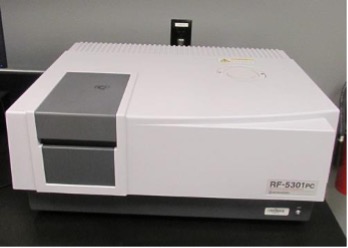
This is used to detect a specific compound in a complex background by measuring fluorescence of the compound. Compounds can be made fluorescent by tagging them with probes. It is a commonly used technique for quality control of pharmaceuticals such as purine and pyrimidine analogs used as cancer drugs.
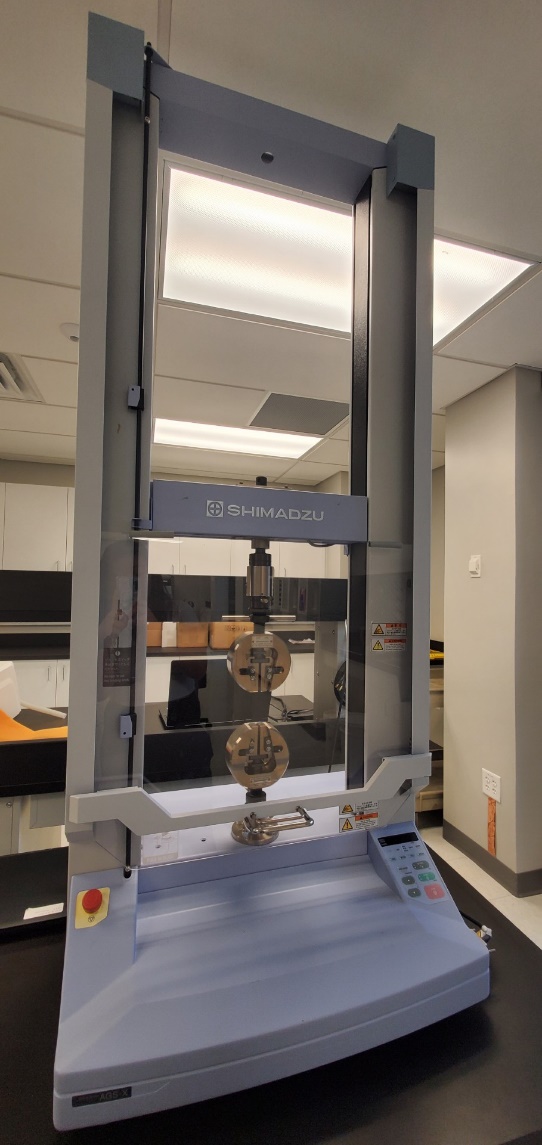
The Shimadzu AUTOGRAPH AGS-X2 series provides superior performance and practical testing solutions for a wide array of applications. Offering high-level control and intuitive operation, the AGS-X2 series sets a new standard for strength evaluations while providing the utmost in safety considerations in a modern, stylish design.
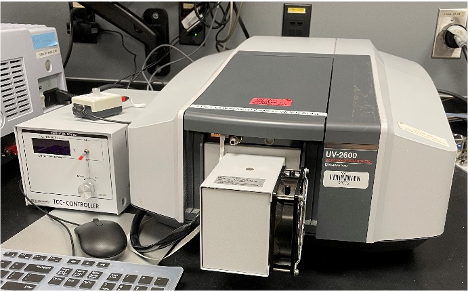
This is routinely used in the quantitative measurements of transition metal ions and conjugated organic compounds. Some applications are measuring DNA or protein concentrations in biological samples, nitrogen content in wastewater reacted with a reagent, residual formaldehyde in children's clothing and sleepwear. Equipped with a temperature controller, this instrument can be applied for kinetic studies.
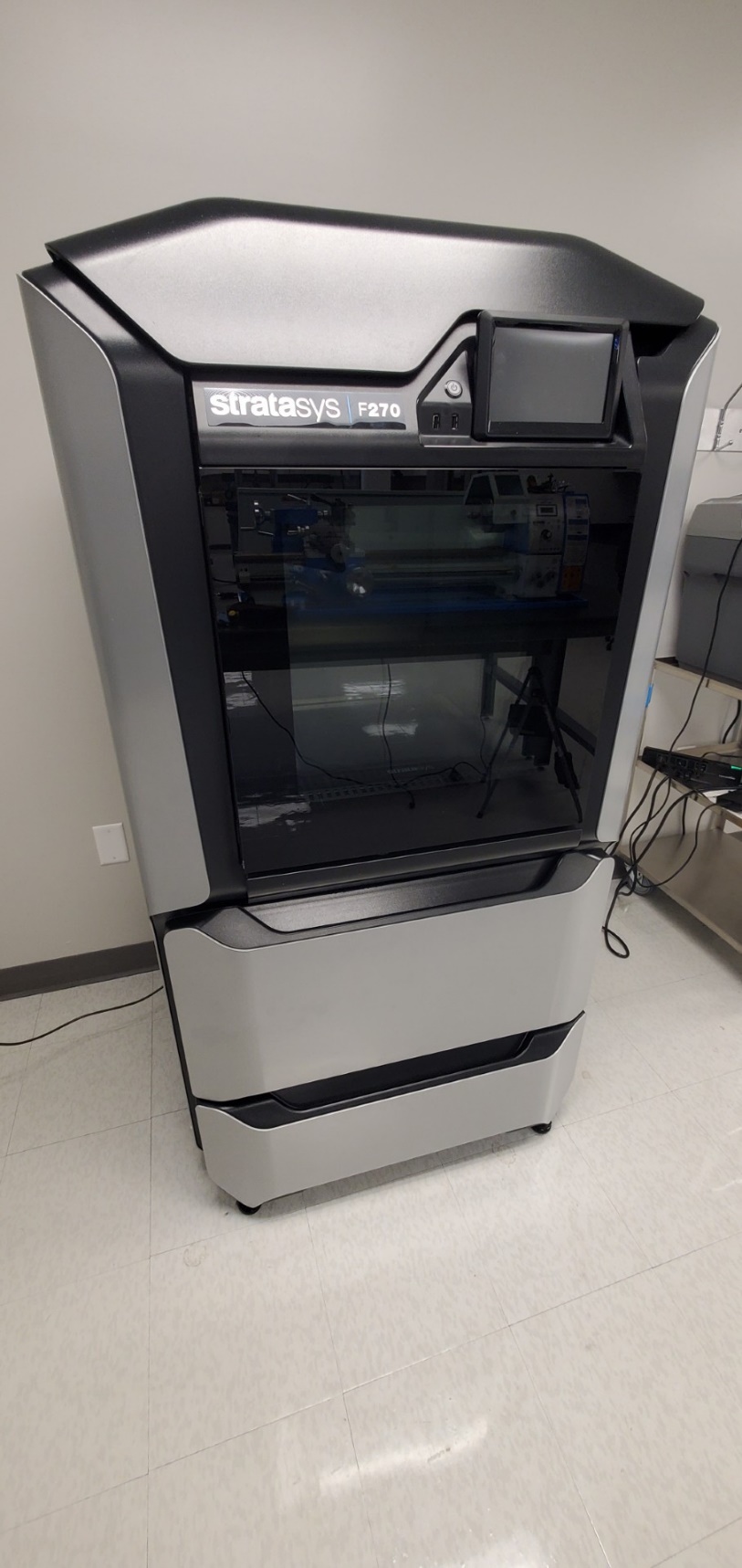
This printer offers a versatile selection of materials, including carbon fiber, thermoplastic polyurethane, and other engineering-grade thermoplastics. You’ll combine fast and easy material swaps, a generous build volume, and dependable print results to provide accurate, repeatable 3D printing suitable for the classroom or office when using the F270.
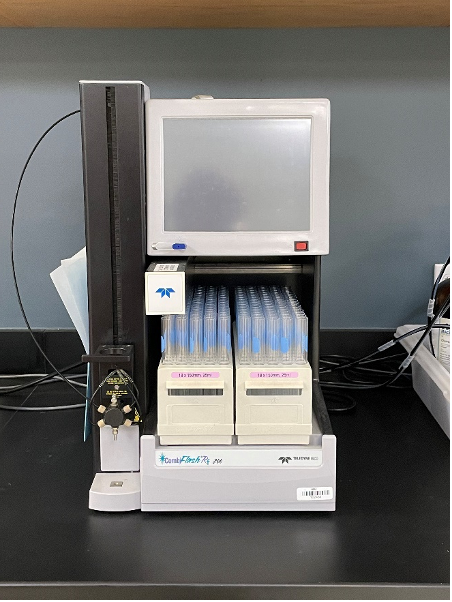
The Teledyne Isco CombiFlash Rf flash chromatography system gives you high-productivity automation, programmable gradients, UV detection and peak separation, and automatic detection of columns and collection tube racks. Its small size makes it a great “personal system” and well-suited for operation within chemical hoods and other limited indoor spaces.
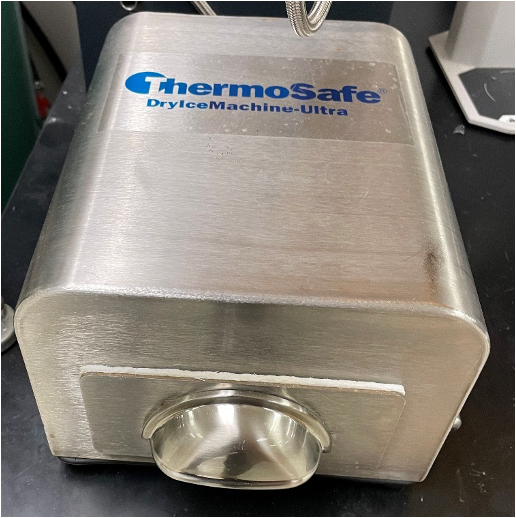
This instrument creates up to 10 blocks of dry ice in house each tank of siphon carbon dioxide.
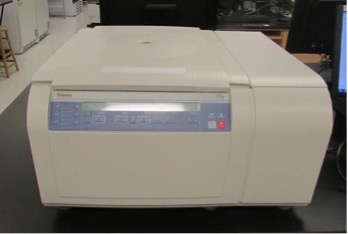
This is a high-capacity centrifuge that operates at low temperatures suitable for separating active biological samples such as cells, DNA, protein precipitations, and some subcellular fractions. The centrifuge acceleration and deceleration are controllable.
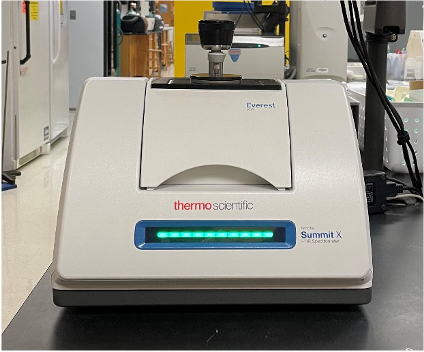
This instrumentation is used to analyze and identify chemical compounds by measuring how much light it absorbs as set wavelengths. Has the spectral range of 8000 to 350 cm-1 optimized, mid-infrared KBr beamsplitter. It can be used to verify material composition, detect contaminants, or compare unknown substances to reference spectra. Equipped with ATR for higher resolution and less sample required.
Get More Information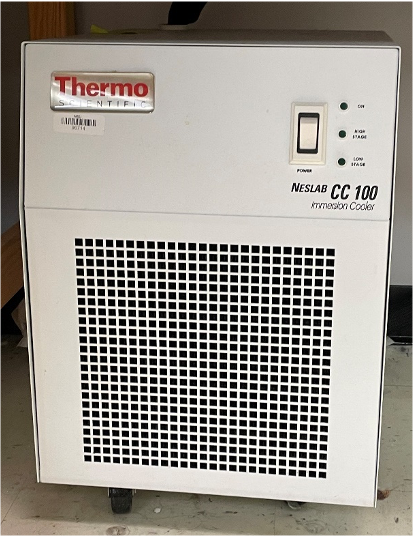
Meet demanding application requirements with cooling to -90 C. The NesLab CC Series of immersion coolers are easy to use and designed to enhance the low temperature laboratory work.
Get More Information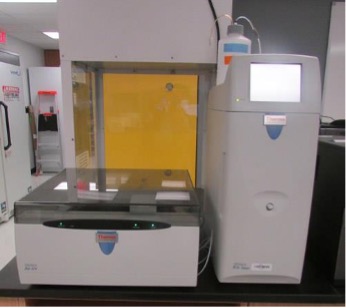
This is used for high throughput trace-level analyses of anions or cations in a variety of samples including drinking water, beverages, and dietary supplements. It is also used to monitor trace ion contamination in fine chemicals production introduced by corrosion damage in the production facilities.
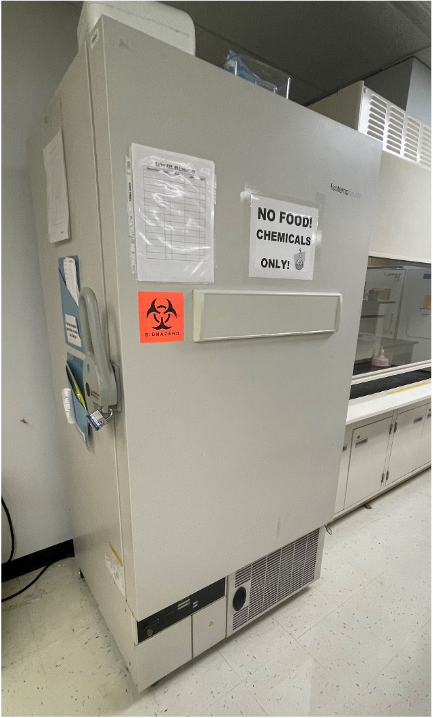
Isotemp ultra-low temperature freezers combine the highest reliability and performance with cost-effective operation and innovative features. These freezers feature an advanced technology platform, refrigeration, microprocessor controls and high-quality construction. Keeps contents at an ultra-low temperature of -80C.
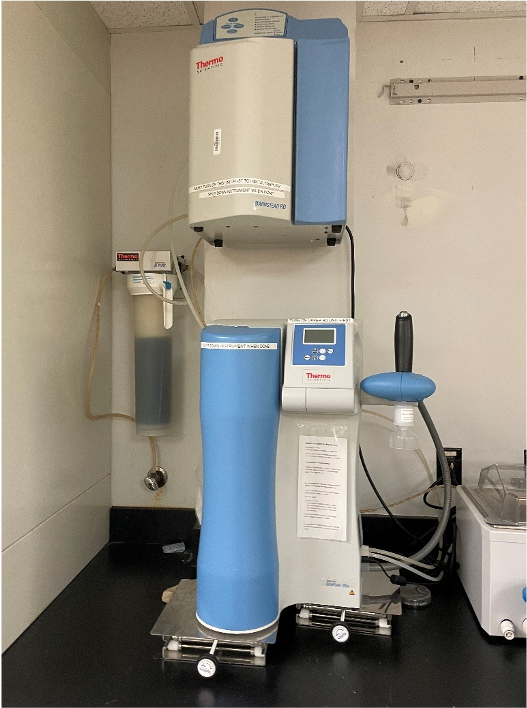
A series of filtration systems that provides the lab with ultra-pure water. Free from virtually all organic and inorganic compounds and particles. Generates pure water that is needed in working with PCR, DNA sequencing, cell and tissue culturing, and trace element analysis.
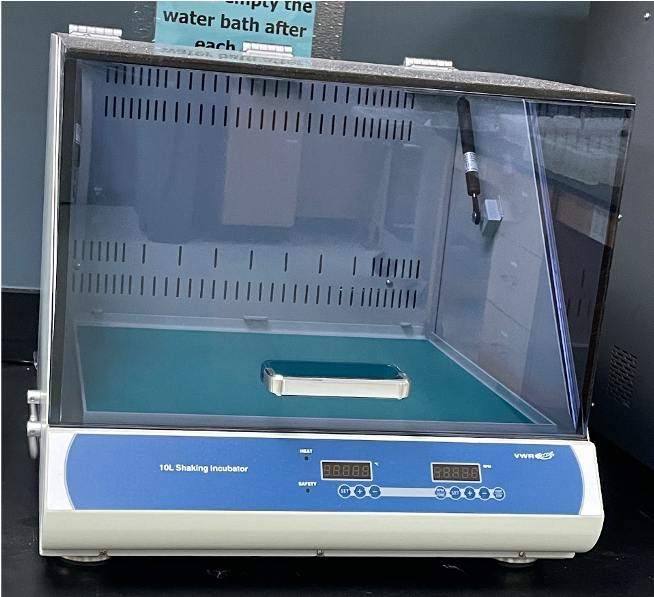
This is a temperature-controlled shaker for growing bacteria in large size flasks. The shaker platform moves in a circular motion to provide mixing and gas exchange in the culture. Equipped with a non-slip mat that allows for containment of variety in size for glassware.
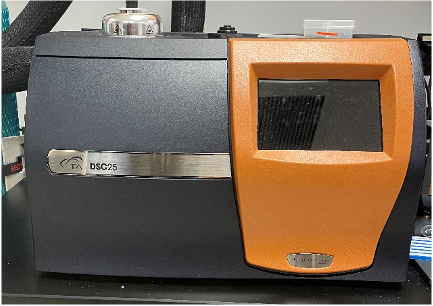
This measures the rate and degree of heat change of materials as a function of temperature against a reference material and then reports the transition temperatures and enthalpies.